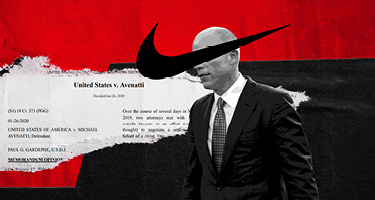Many defenses can be used if a person is accused of a crime. Some of these include insanity, coercion, duress, withdrawal, self-defense, intoxication, consent, or statute of limitations. They can also be categorized as affirmative defenses or non-affirmative defenses. States determine which defenses can be used, who can use them, and what the circumstances must be to grant the defense.
Affirmative Defense of Duress
An affirmative defense means that the defendant admits that they committed a crime. However, they also offer a reason to justify why they committed the crime. This reason might be enough to lessen the charges against them or even negate their guilt altogether. Types of affirmative defenses that are allowed vary state to state.
Duress means that you’re being forced to do something that you don’t want to do because of the threats, constraints, or violence. It is a defense that claims the individual had no choice to commit the crime because they feared for their life or someone else’s. The threat generally must be immediate and happen at the time of the crime. For example, someone holding a gun to a person’s head and making them commit a crime would be considered duress.
Duress as an Affirmative Defense in Arizona
Several defenses can be used in Arizona. These include self-defense, insanity, and justification. Duress belongs under the affirmative defense justification. This means that a crime has been committed but under mitigating circumstances that should negate the guilt of the defendant.
In Arizona, duress is a justified and affirmative defense to being charged with a criminal act. The courts use the standard that a reasonable person in the same circumstance would believe that they were forced to commit the act because of a threat of an immediate use of force that could lead to a serious injury. The threat can be against the defendant or another individual.
The Arizona statute only allows a duress defense if a reasonable person in the same situation would have not resisted the use of force. This means that if the court finds that other individuals may have said no to the action or were able to resist the threat of force, the defendant will not be able to use this as a defense.
Recent Changes to the Arizona Affirmative Defense of Duress
In 2018, a decision made by the Arizona Supreme Court altered the definition of duress as a defense. The case focused on a woman who was convicted of the abuse of her three children. She was sentenced to 20 years in prison. At trial, the woman claimed that she was forced to lock her daughters up for months in horrendous conditions because she feared that her husband would hurt her or her daughters if she tried to intervene or save them.
The defense wanted to present evidence of abuse towards the woman that included a doctor’s diagnosis of post-traumatic stress disorder and pictures of abuse she had suffered from her husband. The judge claimed that the woman was using a battered women’s syndrome defense and not duress. This means that the judge believed the woman was claiming to be so abused that she did not have the mental capacity to know that she was committing a crime.
The judge then ruled that the woman was not allowed to use duress as a defense because her claims meant that her defense was that she had a diminished capacity when she committed the crimes. A diminished capacity defense is not allowed in Arizona. The decision was appealed and the case went to the Arizona Supreme Court. They rejected the lower court’s finding and held that the woman should have been allowed to raise the duress defense.
Impacts of the Recent Changes
The Arizona Supreme Court stated that it did not matter if the threat was immediate to the woman in this particular case. A jury should be allowed to determine whether the woman was forced to go along with the crime because she had a reasonable belief that her husband would hurt her or the children at some point. The threat of fear could have been over several days or weeks. Therefore, the court held that the woman should have been able to use duress as a defense at her trial.
The implication of this could be far-reaching in the state. The decision means that the threat of force in an affirmative defense no longer needs to be directly immediate at the time of the crime. This can now be used at trial if the defense can prove that an ongoing threat was “sufficiently immediate.” This means that the crime and threat only need to be closely related. In fact, as in the case here, they can be several days apart. This expands the use of duress and allows it to be used in a broader amount of cases.
----------
About the Author: Craig Orent is a criminal lawyer in Phoenix, AZ, and founder of Orent Law Offices, PLC. He has over 30 years of experience handling all serious state and federal criminal matters.
Access top-rated attorneys through the Best Lawyers Find a Lawyer tool to help with your legal matters.
































